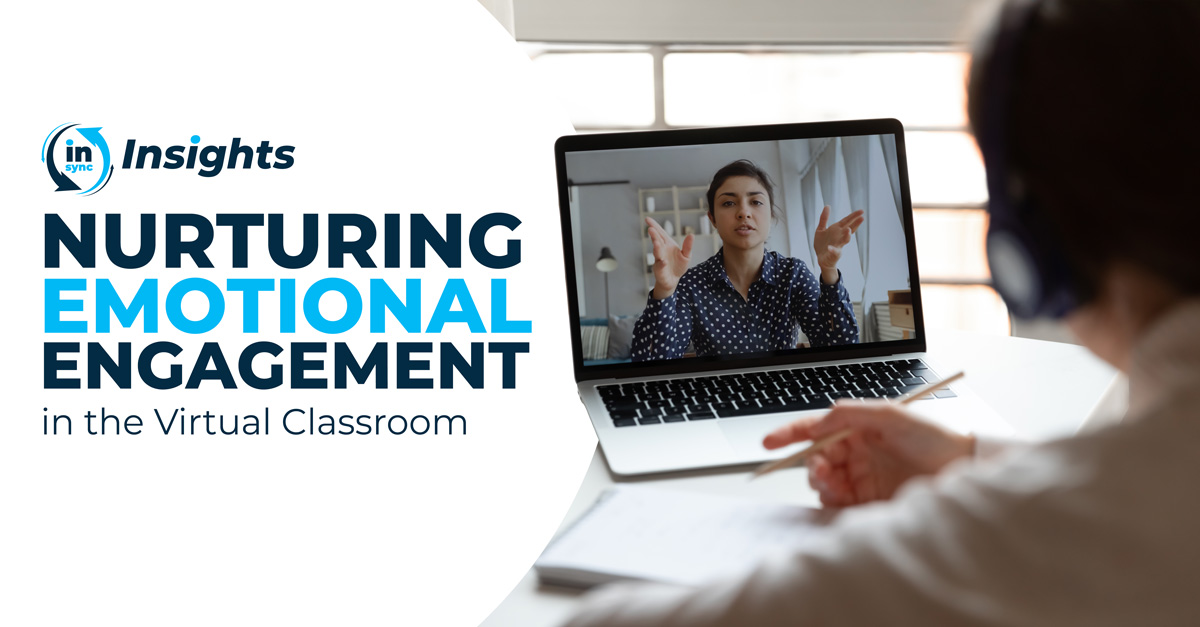4 min read
Fostering Environmental Engagement in the Hybrid Virtual Classroom
 Jennifer Hofmann
:
Jun 3, 2024 7:00:00 AM
Jennifer Hofmann
:
Jun 3, 2024 7:00:00 AM

If a tree falls in the woods and no one witnesses it, does it make any noise? If an individual hates the virtual classroom, does their reaction have an impact on the success of the program?

Of course it does. Various factors impact both the learner and the learning environment in hybrid learning and the virtual classroom. Such factors include the learner's contributions, interactions with other learners, content delivery, and interactions with the facilitator. To create an engaging learning environment, we need to make learners feel comfortable with the capabilities and requirements of the virtual classroom.
The Facilitator's Role in Fostering Environmental Engagement in a Global Classroom
In the global hybrid workplace, the role of virtual classroom facilitators becomes even more important. Their mission extends beyond merely sharing knowledge or managing conversations; it encompasses the nurturing of an environment that fosters inclusivity, promotes cohesion among diverse groups, and celebrates the rich cultural and experiential diversity of a worldwide team. This responsibility is crucial in ensuring that the virtual spaces—be they for learning or working—are not just functional but truly inclusive and engaging for all participants.
Virtual Classroom Facilitators are responsible for fostering environmental engagement by
- Creating Inclusive Virtual Environments. Facilitators are managers of the virtual space, ensuring that every aspect of the environment is accessible and welcoming to individuals from a broad spectrum of backgrounds. This involves careful consideration of time zones, language preferences, and cultural sensitivities when scheduling sessions, designing content, and selecting communication channels. Facilitators must also be adept at using inclusive language and fostering an ethos of respect and understanding, making sure everyone feels seen and heard.
- Promoting Cohesion and Collaboration. Given the geographical and cultural diversity inherent in global hybrid workplaces, facilitators play a key role creating a cohesive narrative that connects disparate groups. By employing collaborative tools and methodologies that encourage interaction and teamwork, facilitators can help build bridges across the digital divide. Through shared projects, cross-cultural teams, and discussion forums, they can facilitate the exchange of ideas and experiences, thereby promoting a sense of unity and collective purpose.
- Celebrating Diversity and Encouraging Cultural Exchange. Facilitators have the unique opportunity to turn the virtual workspace into a place for cultural exchange. By integrating multicultural elements into programs and encouraging participants to share their own cultural heritage, facilitators can enrich the learning and working experience for everyone involved. This could involve dedicated cultural appreciation days, guest speakers from different parts of the world, or virtual "global cafes" where participants can informally share stories and insights from their cultures.
- Cultivating an Environment of Continuous Learning and Adaptation. The global hybrid workplace is constantly evolving, presenting facilitators with the ongoing challenge of staying attuned to the changing dynamics of virtual engagement. This requires a commitment to continuous learning and adaptation, seeking out new strategies, tools, and approaches to enhance environmental engagement. Facilitators must remain curious and open-minded, willing to experiment with innovative methods to maintain relevance and effectiveness in their facilitation practices.
8 Engagement Strategies for Virtual Learning that Foster Environmental Engagement
Virtual classroom facilitators can foster environmental engagement with the following strategies:
- Fostering "comfort" and digital fluency in the virtual classroom environment. Creating an environment of comfort and digital fluency is crucial in the virtual classroom. When learners feel at ease, they can fully concentrate on their learning journey. For example, think about a learner who wants to contribute by raising their hand. Neglecting to provide guidance on interacting with peers, content, and the facilitator diverts the learner's attention to figuring out these basic mechanics instead of focusing on the experience. This can lead to frustration.
- Creating a diverse environment that is accessible to all learners. When learners perceive that their personal needs are being met, they experience a more inclusive learning environment and become more receptive to learning.
- Encouraging diversity of opinions and open conversations. When learners respond with “yeah, but,” “what if?”, and “in my experience. . .”, you have evidence that they are listening and connecting to the content. When they are engaged in active conversation with each other over these types of comments, you have evidence that you are taking the learning to a deeper level. At that point, the role of a facilitator is to guide the discussion to ensure every learner gets the most out of that experience.
- Fostering conversation with learners. Meaningful conversation between learners and the facilitator is evidence that the learning environment is becoming more natural, and it indicates that the learners feel “safe” to contribute.
- Nurturing positive engagement in the learning environment. The impact of learners contributing to the discussion in a meaningful way is positive as discussions become more interesting and sophisticated. Alternatively, when learners (or even one learner) contribute in a negative way, the entire learning environment suffers.
- Fostering a willingness to change and adopt new knowledge and skills. Training programs are designed to assist individuals in changing how they work. Persuasive lessons impact the learner’s willingness to learn new concepts.
- Supporting understanding by encouraging learner questions. Learners often feel they have more in common with other individuals in the class than with the facilitator. Therefore, meaningful questions from other learners spur individuals to pay more attention.
- Encouraging interaction between learners. Meaningful interactions between learners are evidence that they are focused on learning rather than the technology, indicating comfort in the learning environment. This is fundamentally different than two learners talking to each other—this is “building” upon another learner’s contribution in an active multi-voice discussion. In this scenario, the learning becomes a narrative with the learners telling the story.
Environmental engagement in the virtual classroom is both possible and necessary. Strategies that prioritize comfort, diversity, open conversation, and interaction can transform virtual training into a dynamic, engaging virtual learning experience.
Remember—we're not just delivering content; we're shaping a learning environment. In doing so, we empower learners to concentrate on the knowledge and skills being delivered rather than the technology being used. Let's pledge to create a virtual learning environment that is interactive, inclusive, and conducive to growth. Keep in mind—the success of a virtual program isn't determined solely by the tools we use, but also by how we facilitate the learning journey within that environment.
What's Next for Virtual Trainers?
Earn your Virtual Facilitation Certification today! Sign up for InSync's Virtual Classroom Facilitation Mastery certificate program and become an expert in fostering engagement and creating dynamic virtual learning experiences. Take the next step in shaping impactful virtual classrooms.

Nurturing Emotional Engagement in the Virtual Classroom
People often perceive corporate training as a mandatory, impersonal process: they fulfill the requirements and proceed to the next task. This...


